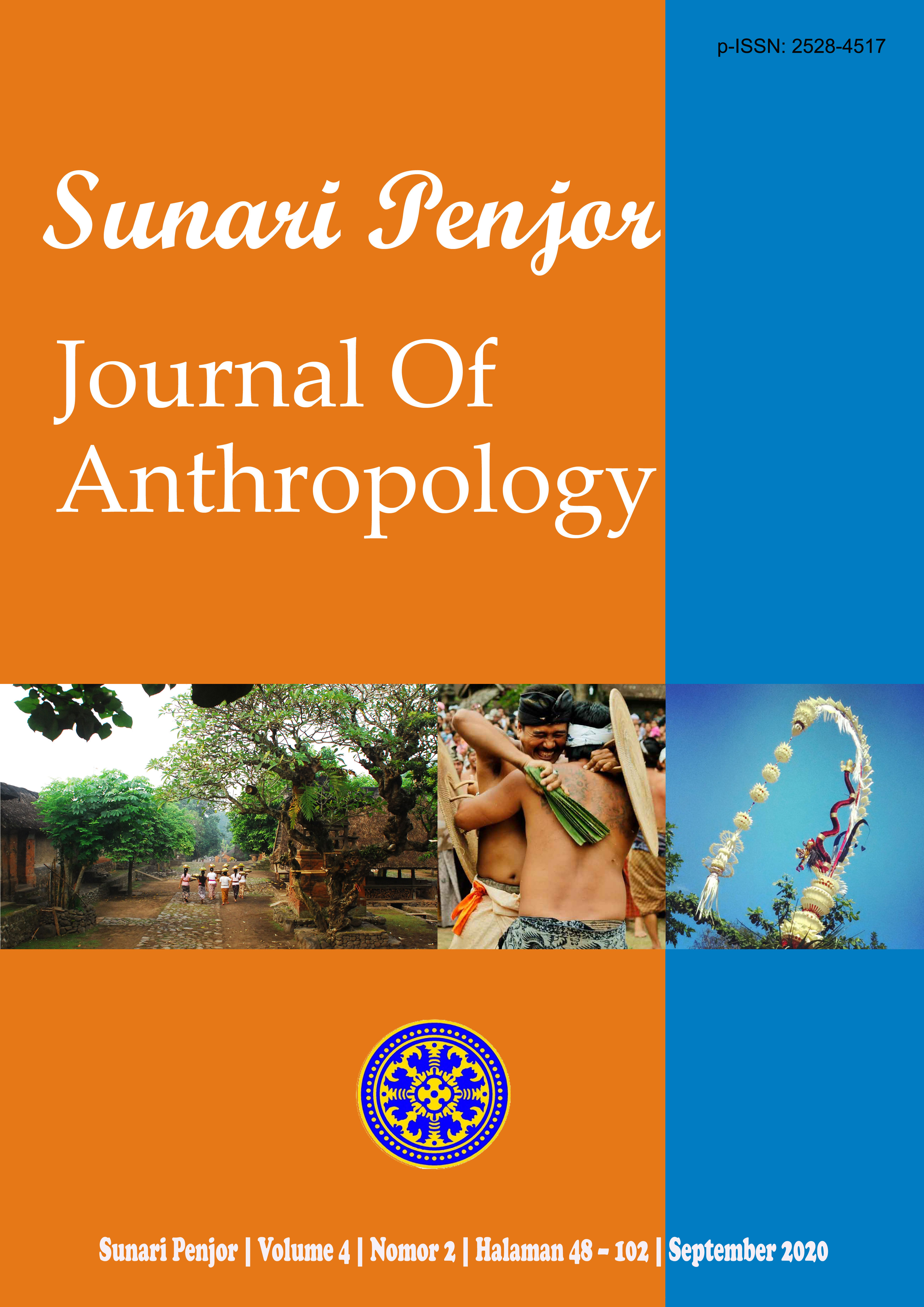Eksistensi Drama Tari Gambuh di Desa Adat Pedungan, Kelurahan Pedungan, Kecamatan Denpasar Selatan
Abstract
The dance drama gambuh is a performing art in the form of total theater. In addition to the dominant elements of dance, there are also elements of other arts such as percussion, literary arts, vocal / dialogue arts, fine arts, and make-up that are harmoniously integrated and beautiful. The dance drama gambuh has become a sacred dance in Pedungan Traditional Village, Pedungan Village. Currently the development of the dance drama gambuh is no longer a foreign art among teenagers, this is evidenced by the high interest of teenagers who want to dance this dance when it is performed at temples and at Balinese art parties. Thedance drama gambuh has succeeded in introducing its dance outside the province and even abroad to be precise in Germany. Thus this research formulates the following problems, (1) the existence of the dance drama gambuh in Pedungan Traditional Village, Pedungan Village and (2) the meaning of the dance drama performance gambuh in Pedungan Traditional Village, Pedungan Village. This research uses the structural functional theory from Radcliffe-Brown, the symbolic interpretive theory from Clifford Geertz, and the theory of the meaning of symbols proposed by Victor Turner. These three theories are used because they have a relationship in the dance drama gambuh. The data collection technique starts with the informant determination technique, the observation technique, and the interview technique. This dance drama performance gambuh has meanings contained in the story such as religious meaning, aesthetic meaning, socio-cultural meaning, education meaning, and identity meaning. The results of this study reveal that the dance drama gambuh still exists among children, adolescents, and adults. With the establishment of the Kerta Jaya studio, which was built by I Kadek Sudiarta dance drama gambuh this can be introduced to children as the next generation so that dance drama gambuh this doesn’t disappear. The dance drama gambuh has also become an identity in Pedungan Village.
Downloads
References
Astini, Siluh Made. (2001). Makna Dalam Busana Dramatari Arja Di Bali. Jurnal Pengetahuan dan Pemikiran Seni 2(2). 2001.
Bandem, I. M. (1996). Evolusi Tari Bali. Yogyakarta: PT Kanisius.
Budiarsa, I.W. (2019). Drama Tari Gambuh Di Era Revolusi Industri
4.0. Seminar Nasional Fakultas Seni Pertunjukan.
Budiarsa, I.W.(2017). Vokal Pertunjukan Drama Tari Gambuh Desa Batuan Gianyar Dalam Cerita ‘Karya Gunung Pengebel’. Jurnal Seni Pertunjukan 3(1). 2017.
Dibia, I. W. (1994). Tari Tarian Bali Kreasi Baru: Bentuk, Pertumbuhan dan perkembangannya. Jurnal of Art and Culture 2(1).
Eny, I. V. (2000). Tari Bali: Sebuah Telaah Historis (Bali Dance: A Historical Research). Jurnal Pengetahuan dan Pemikiran Seni 1(2), 75-90.
Formagia, Maria Cristina. 2000. Gambuh Drama Tari Bali. Tinjauan Seni, Makna Emosional dan Mistik, Kata-Kata dan Teks. Musik Gambuh di Desa Batuan dan Desa Pedungan. Denpasar: Yayasan Lontar.
Gotama Adi dan Dewi Prayitna. (2019), Gede Geruh Pengukuh dan Pengokoh Dramatari Gambuh Desa Pedungan, Kota Denpasar. 1(1). 2019.
Purnamawati Ni Diah. (2018), Deskripsi Dialog Drama Tari Gambuh Cerita “Dedoyan”. Jurnal Seni Pertunjukan 4(1). 2018.
Ruastiti, N.M. (2017). Membongkar Makna Pertunjukan Tari Sang Hyang Dedari Di Pura Saren Agung Ubud, Bali Pada Era Global. Jurnal Seni Budaya 32(2)
Sarwa dan Wardizal, I Nengah. (2007), Pasang Surut Gambuh Pedungan Di Tengah Laju Budaya Global. Mudra Jurnal Seni Budaya 21(1). 2007.
Sigit, S, (2013). Dampat Globalisasi Media Terhadap Seni dan Kebudayaan Indonesia. Jurnal Ilmu Komunikasi 2(1).
Sitti, R. A. A. (2017). Mengembangkan Kapasitas Pemuda dengan Meningkatkan Keterlibata n dalam Melestarikan Budaya Lokal Sebagai Aset Kekayaan Nasional. Academia.edu.
Sudiartha, I Kadek Agus Dwi.2015. “I Made Lempig Tokoh Pelestarian Seni Pegambuhan Pedungan, Kota Denpasar”. (Tesis). Denpasar: Institut Seni Indonesia.
Sumiari N.K, & Setyarini, N.P. (2015). Perancangan Media Publik Kesenian Tari Bali Berbasis Web. Stmik Jurnal Sistem dan Informatika (KNS&1).
Thamrin, M. (2012). Kesenian dan Masyarakat. Jurnal Imajinasi 1(4). 2012.














